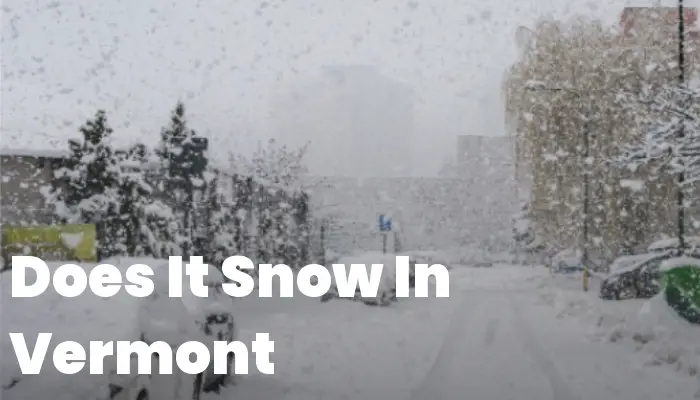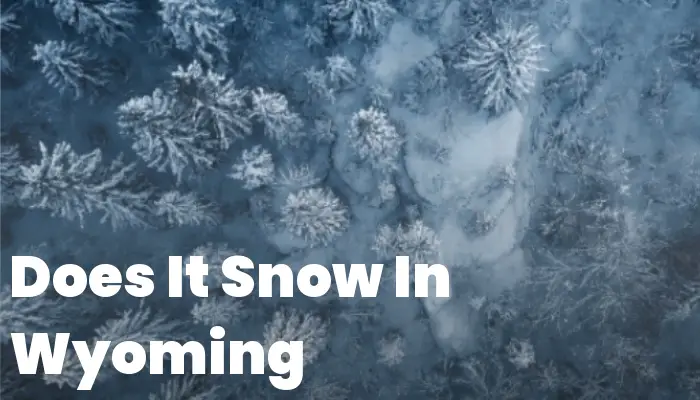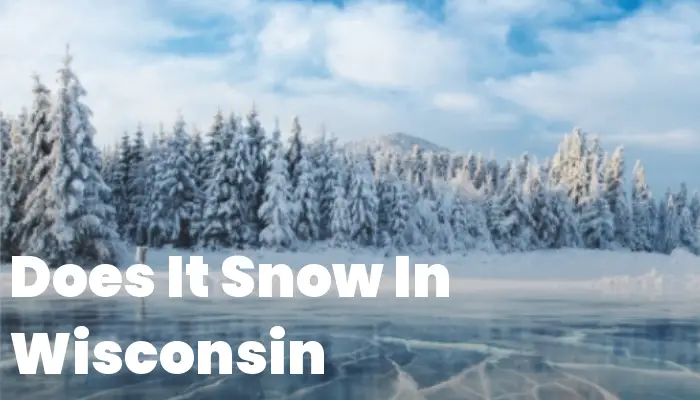Does it snow in Vermont? If you’re thinking of visiting this picturesque northern state or even moving there, that’s a crucial question to ask.
The answer is a resounding yes! Vermont is known for its breathtaking winter landscapes, largely due to its considerable snowfall.
In this article, we will delve into the details of Vermont’s weather conditions and provide insightful data about the average amount of snowfall. Discover all you need to know about how winter manifests in the Green Mountain State.
Does It Snow In Vermont?
Yes, it most certainly does snow in Vermont. Known for its stunning winters and as a haven for snow enthusiasts, the state receives quite a generous amount of the white fluff each year. Vermont’s snowfall is one of the defining features of its climatic identity. As part of the northeastern United States, Vermont experiences a range of weather conditions, but it is perhaps best known for its picturesque snowy winters that transform the landscape into a winter wonderland.
The state’s geography plays a crucial role in determining how much snow falls each year. The Green Mountain range runs through the center of Vermont and tends to receive more significant amounts of snow due to higher elevations. These mountains not only contribute to more considerable accumulation but also help maintain cooler temperatures which ensure that snow stays on the ground longer throughout the winter.
Snowfall begins as early as October for some parts and can last well into April, making for a long winter season that is ideal for winter sports like skiing and snowboarding—a key part of Vermont’s tourism economy. For residents and visitors alike, this means ample time to enjoy all things winter—whether it’s cozying up by the fireplace or hitting the slopes.
How Much Does It Snow In Vermont?
When we delve into snowfall averages, you’ll find that they vary across different parts of Vermont. Typically, lower elevations will see an annual average ranging from 60 to 100 inches (150-250 cm), while higher elevations can receive upwards of 200 inches (500 cm) or more.
One notable location which exemplifies this variance is Mount Mansfield—the highest peak in Vermont—where annual average snowfall reaches around 280 inches (710 cm). This sheer volume creates excellent conditions for ski resorts like Stowe Mountain Resort which rely on both natural and man-made snow.
Also worth mentioning are regions such as Northeast Kingdom and Southern Vermont; both have their own unique weather patterns contributing to their yearly totals. Overall, Vermont’s winters are characterized by consistent snow coverage, providing reliable conditions for winter activities throughout much of the state during these colder months.
Are There Ice Storms In Vermont?
Winter in Vermont doesn’t just bring copious amounts of fluffy powder; it also comes with its fair share of ice storms. These events occur when there’s freezing rain that causes ice to accumulate on surfaces such as trees, power lines, roads, and houses.
These storms can be particularly hazardous leading not only to dangerous driving conditions but also potential power outages if ice accumulates heavily on power lines or tree limbs causing them to break. The most severe ice storm in recent memory occurred in January 1998 which had devastating effects across much northeastern North America including parts of Vermont; infrastructure was damaged extensively and many were left without power for several days or even weeks.
However, it’s worth noting that while ice storms do happen in Vermont, they are not an everyday occurrence during winter months—they tend to happen when specific atmospheric conditions align—and local authorities are typically well-prepared with contingency plans to deal with any disruptions caused by these icy events.
Does it Snow in Vermont is a crucial question for those planning to visit or move to this state. Similar inquiries also arise regarding weather conditions in other states. For instance, how does Vermont’s snowfall compare to Virginia’s?
What about snowfall in states like Washington? The article on Does It Snow In Washington provides relevant insights into the Pacific North West’s weather patterns.
Comparable questions such as Does It Snow In West Virginia, serve a similar purpose, giving prospective visitors an idea of what to expect.
Last but not least, with its harsh winters and heavy snowfall, information on does it snow in Wisconsin, is essential for anyone planning a winter trip or looking to relocate there.
Where Does It Snow In Vermont?
In Vermont, snowfall is not just limited to the high peaks; it blankets the entire state, although distribution and accumulation vary by region. The westward slopes of the Green Mountains usually receive more snow than the eastern slopes due to orographic lift, which occurs when moist air ascends a mountain range and cools, leading to precipitation.
The highest snowfall tends to occur in areas like the Northeast Kingdom, which is positioned for optimal moisture collection from prevailing westerly winds. Towns such as Jay and St. Johnsbury often see higher snow totals because of this. Central Vermont, including cities like Montpelier and Rutland, also experiences significant amounts of snow due in part to their elevation and geographical position within the state.
On the flip side, regions located in valleys or lower elevations such as the Champlain Valley get less snowfall compared to mountainous areas. Burlington, despite being a major urban center in Vermont, typically sees less snow than many other parts of the state due to its proximity to Lake Champlain which can have a moderating effect on local weather patterns.
Local microclimates also influence where and how much it snows in Vermont. For instance, small changes in topography can lead to dramatic differences in snowfall within short distances—a phenomenon known as ‘snowbelt’ effects that are common around mountain ranges.
Vermont Roads and Winter Weather Conditions
When it comes to winter driving conditions,Vermont’s roads present varied challenges depending on weather patterns and maintenance responses. The state is proactive with winter road management including salting, sanding, and plowing but even so during severe weather events travel can become difficult or even hazardous.
Key highways such as Interstate 89 (I-89), Interstate 91 (I-91), and U.S. Route 7 are prioritized for clearing but heavy snowfalls can quickly lead to slushy or icy conditions before maintenance crews are able repsond effectively Moreover rural roads may take longer for plow services reach creating potential delays residents living more remote areas
Vermont’s Agency of Transportation (VTrans) monitors road conditions closely issuing alerts advising motorists when necessary Their website offers up-to-date information regarding traffic advisories construction updates current driving conditions helping drivers make informed decisions before hitting potentially treacherous roads
Nonetheless it’s essential that drivers prepare for winter driving having necessary supplies vehicles This includes fitting cars with winter tires carrying emergency kits maintaining good battery health understanding how operate vehicles safely slick environments
Tips for Safe Winter Driving In Vermont
To ensure safety during snowy months here are additional tips : Reduce speeds adjust according climate stay vigilant about black ice Pay attention weather forecasts plan routes accordingly Lastly always keep plenty fuel car avoid getting stranded case get caught sudden storm
How Cold Does It Get In Vermont ?
Vermont’s temperatures during winter months can be quite brisk with averages dipping well below freezing . January typically coldest month with average low temperatures ranging between 10°F (-12°C) northern parts state upward 22° F (-6° C ) southern regions However subzero readings not uncommon especially overnight rural higher elevation locations.
Wind chill factor plays significant role perception cold as well When winds whip across landscapes they enhance cooling effect making actual feel colder than thermometer reads These so-called ‘feels-like’ temperatures important consider when dressing going outside taking into account potential frostbite hypothermia risks associated prolonged exposure elements.
Aside from cold snaps there general trend seasonal warming though overall remains conducive maintaining ground cover throughout Now more ever important keep track changing climate trends understand implications has recreation lifestyle infrastructure alike cold reality life beautiful albeit sometimes challenging Green Mountain State.
Vermont, known for its picturesque landscapes and cold winters, sees an ample amount of snow across its diverse cities. South Burlington, for example, experiences a significant amount of snowfall which blankets the city in a white cover, transforming it into a winter wonderland. Nearby, Essex Junction also receives its fair share of snowflakes, heightening the charm of this small town with each flurry. In the heart of the state, residents of Burlington, Vermont’s largest city, prepare for snowy streets and winter sports as the temperatures drop.
Moving southward from Burlington’s bustling urban snowscape is Rutland, where the snow also plays a central role in daily life during winter months. The region adapts to these seasonal changes with a robust infrastructure geared towards managing and enjoying the seasonal precipitation. Finally, not to be outdone by its larger counterparts, Barre sees a wintery mix that blankets its famous granite quarries and historic architecture in a layer of pristine snow. Each location within Vermont has its unique relationship with winter weather but shares the common thread of snowy seasons that are both beautiful and challenging.
Winter Activities In Vermont
Vermont is a premier destination for winter activities, and its consistent snowfall makes it a paradise for those seeking to enjoy the outdoors during the colder months. Skiing and snowboarding are arguably the most popular activities, with Vermont boasting some of the East Coast’s best ski resorts such as Killington, Sugarbush, and Stowe. These resorts offer a range of slopes catering to all levels from beginners to advanced skiers.
Cross-country skiing and snowshoeing are also beloved pastimes in Vermont, with an abundance of trails that weave through scenic forests and open meadows. The Catamount Trail is one extensive cross-country route running the length of the state, offering picturesque terrain suitable for long-distance adventures.
For those who enjoy motorized recreation, snowmobiling is another favorite activity. The VAST (Vermont Association of Snow Travelers) maintains an impressive network of trails spanning over 5,000 miles throughout the state – perfect for exploring Vermont’s winter wonderland.
Finally, families can delight in sledding or tubing at local hills or designated areas within parks. Ice skating on frozen ponds and lakes is yet another way to enjoy Vermont’s wintry beauty while engaging in physical activity. Each year, residents and visitors alike await these winter pleasures that make enduring the cold well worth it.
Tips for Enjoying Winter Activities Safely
While indulging in winter fun, safety should always be a top priority. Always check weather conditions before heading out and ensure you’re dressed appropriately for extreme cold with layers, waterproof outerwear, gloves or mittens, hats, and thermal socks. When participating in downhill sports like skiing or snowboarding, wear proper protective gear, including helmets.
If you’re unfamiliar with an area or new to a winter sport, consider taking lessons from qualified instructors. They can provide crucial guidance on techniques as well as safety protocols tailored to your skill level. Additionally, never go alone: whether you’re hitting powdery slopes or trekking through backcountry trails – having someone with you ensures help is at hand if needed.
For ice skating on natural ice surfaces check thickness recommendations by local authorities avoid potential dangers such as thin ice Moreover when adventuring remote areas always tell someone where going when expect return case emergency situation arises
Vermont Roads And Winter Weather Conditions
Vermont’s roads during winter are known for being well-maintained despite challenging conditions. The proactive response from road maintenance crews ensures major thoroughfares remain passable; however, unpredictable weather patterns can still lead to difficult driving scenarios.
Highways like Interstate 89 (I-89), Interstate 91 (I-91), and U.S. Route 7 typically receive prompt attention after a snowfall due to their importance in transportation infrastructure.But secondary roads, especially those in rural areas may experience delays before being cleared which adds travel time complexities for daily commuters tourists alike
A valuable resource offered by VTrans includes real-time updates on road conditions which allows drivers plan ahead stay informed about potential roadway hazards Always heed travel advisories take caution if must drive under severe weather circumstances
.


